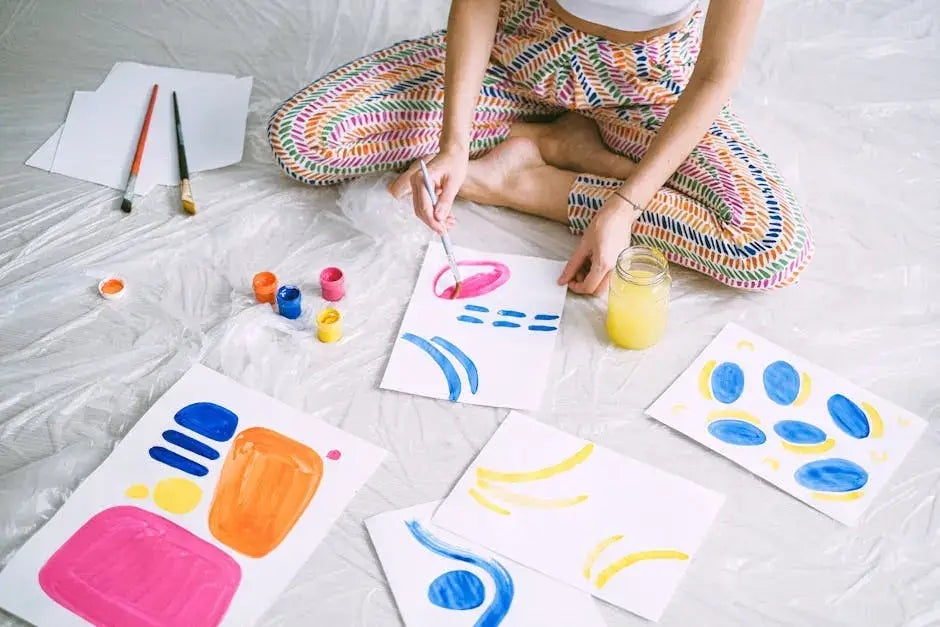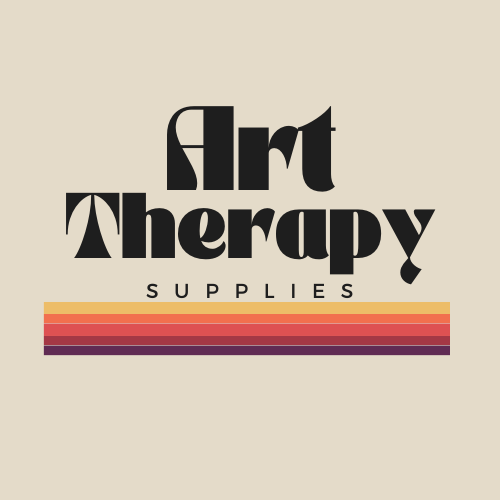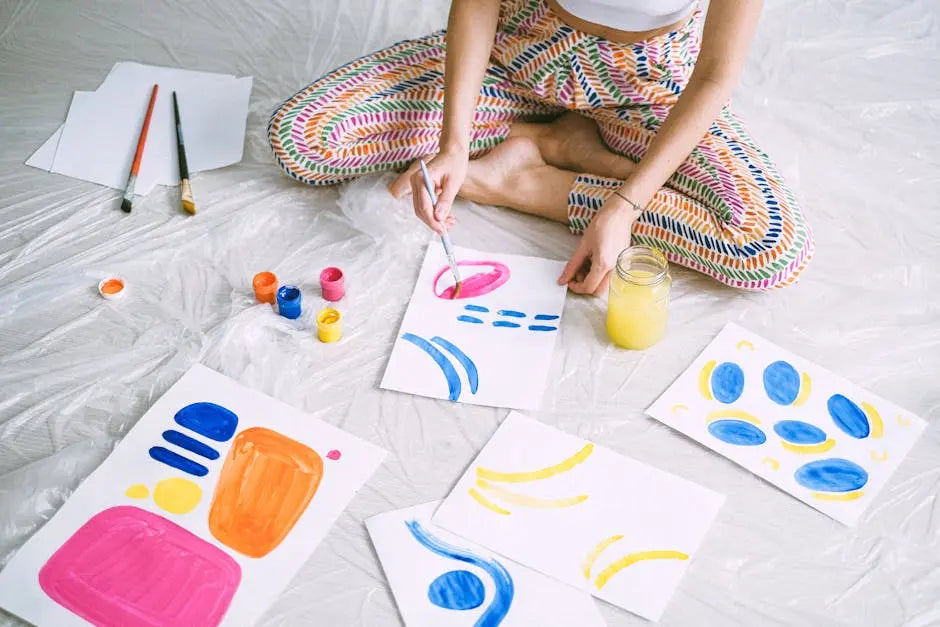Art therapy is more than just creating pretty pictures; it’s a powerful tool for healing and self-discovery. Through individual art therapy, we engage with our emotions and experiences in a creative way, unveiling insights about ourselves while promoting mental and emotional well-being. In this blog, we will explore how individual art therapy can brighten everyday life and serve as a wonderful complement to our mental health journey. 
Understanding Individual Art Therapy
Individual art therapy involves the use of creative processes to help individuals explore their feelings, reconcile emotional conflicts, and foster self-awareness. This unique therapeutic approach recognizes that many people carry deep-seated emotions that are often difficult to articulate verbally. By utilizing colors, shapes, and textures, individuals can communicate their inner landscapes in ways that traditional conversations may not facilitate. This artistic dialogue can be remarkably liberating, allowing participants to delve into their identity and embrace emotional complexities in a safe, non-judgmental environment.
Importantly, art therapy is accessible to everyone, regardless of artistic experience. The focus shifts from producing aesthetically pleasing artwork to enjoying the process of creating itself. This inclusive mindset breaks down barriers and encourages personal expression through various mediums such as painting, drawing, or sculpting, allowing individuals to discover new aspects of themselves through the journey of individual art therapy.
The Psychological Benefits of Art Therapy
Numerous studies have shown that art therapy can significantly reduce anxiety, depression, and stress levels by providing a visual language for those who find verbal expression challenging. Engaging in artistic activities can stimulate the release of endorphins, the body’s natural 'feel-good' hormones, which can enhance mood while helping to lower cortisol levels associated with stress. For individuals grappling with trauma or major life transitions, art therapy offers a healing container that respects each person's pace and comfort level. During emotional turmoil, it can be difficult for many to convey their feelings; art becomes a vital voice that expresses emotions lying beneath the surface.
Additionally, as individuals create, they gain insights into their psychological states. The choices made in selecting colors, forms, or techniques often reflect current feelings, providing an avenue to process complex issues non-linearly. Thus, individual art therapy serves not only as an emotional release but also as a crucial tool for psychological growth.
Fostering Self-Expression Through Creativity
The act of creating art allows individuals to connect deeply with their inner selves, enabling them to articulate feelings and thoughts that might otherwise remain unexpressed. This creative exploration opens the door to a wide range of emotions—from joy to sorrow, frustration to peace—offering a richer understanding of one's self. Moreover, individual art therapy cultivates a capacity for self-reflection, where recurring patterns or themes in artistic work provide meaningful insights into the psyche. Many individuals uncover hidden feelings or unresolved issues through this intuitive process, paving the way for significant personal revelations and growth.
Simple materials, such as colored pencils or watercolors, further simplify the process, removing pressure to achieve a particular artistic standard. The goal shifts towards the experience and emotions evoked during creation, leading to a sense of freedom for authentic self-expression without fear of judgment.
Art Therapy Techniques You Can Try at Home
There are various art therapy exercises you can easily implement at home, including journaling with sketches, painting your emotional state, or even simple doodling. A great starting point is dedicating a few minutes each day to free drawing—allowing your hand to move spontaneously across the page under the influence of your emotions. Another effective method is crafting a 'feelings collage.' Collect images, words, and colors from magazines or printed materials that resonate with your current mood, then glue these elements onto a canvas or paper, creating a visual representation of your feelings at that moment. This exercise fosters a rich dialogue between oneself and their emotions.
Incorporating mindfulness techniques can enhance your creative practice. Start by taking several deep breaths to center yourself before beginning your artwork. While creating, focus on the textures, colors, and sensations of the materials in your hand. This mindfulness practice not only enriches the creative process but also promotes relaxation and grounding, making the art therapy experience even more impactful.
Real-life Stories: Transformative Journeys
Hearing from individuals who have embraced art therapy reveals the profound transformations that can occur in one’s perspective, emotional resilience, and overall quality of life. For many, art therapy has acted as a beacon of hope, guiding them from emotional darkness to renewed joy and self-acceptance. These narratives often showcase unexpected breakthroughs after years of feeling trapped by overwhelming emotions.
Consider Sarah's story; she turned to art therapy during a challenging phase of her life. At first hesitant, she gradually began sketching her feelings, turning her pain into vibrant illustrations that portrayed her inner world. Over time, this artistic practice not only enabled her to navigate her emotions but also ignited a newfound passion for creativity, bringing her profound joy.
These transformative journeys remind us that individual art therapy is a deeply personal experience, offering unique benefits tailored to one’s distinct needs. The diverse expressions and outcomes inspire others on similar journeys, illuminating the extraordinary potential of creativity in the healing process.
Finding a Qualified Art Therapist
When considering professional support, it’s essential to seek a qualified art therapist who can guide you effectively through the process and tailor their techniques to your personal needs. Look for licensed professionals with backgrounds in both psychology and art therapy to ensure comprehensive and informed support. Additionally, factor in the therapist’s experience and specialty areas, particularly if you face specific mental health challenges. A compassionate and knowledgeable therapist can make a significant difference in your individual art therapy journey, facilitating a nurturing space for exploration and authentic expression.
Moreover, trust your instincts during the selection process. An initial consultation can help gauge compatibility and establish comfort. Remember, finding the right therapist is foundational to a productive therapeutic journey—prioritize thorough research and exploration of options to ensure your emotional safety and comfort are paramount.
Embrace the Colors of Healing
Embracing individual art therapy can greatly enhance your everyday life by offering a unique, fulfilling way to express emotions, relieve stress, and encourage introspection. Whether you consider yourself an artist or have never picked up a paintbrush before, the therapeutic benefits of creating art are accessible to all. So why not take steps to explore this vibrant avenue of self-care?

